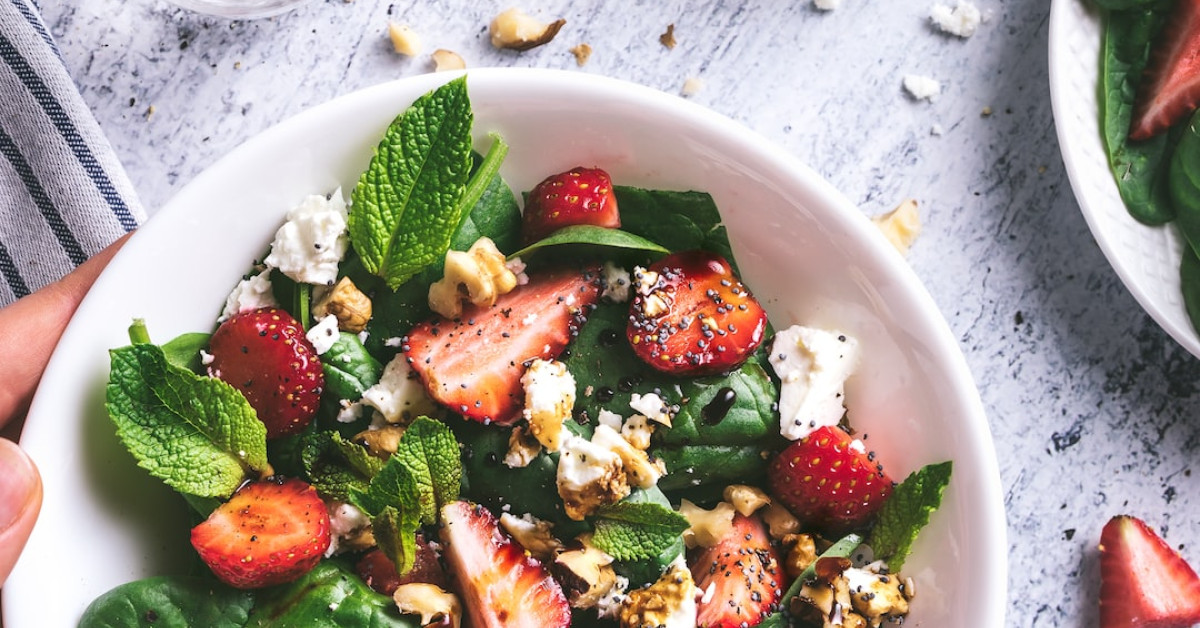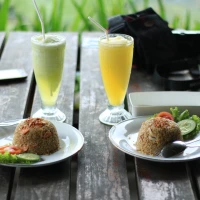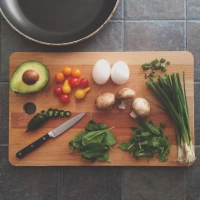The art of cooking is an endlessly unfolding book of culinary secrets, and nestled within its pages is a chapter that whispers tales of transformation and taste. This chapter is all about tallow, a time-honored ingredient that has made a resurgent splash in the world of gourmet and home cooking alike. Tallow, rendered beef or mutton fat, is no mere footnote in the annals of cooking. Its rich texture and sumptuous flavor profiles have been harnessed by chefs and food enthusiasts to elevate dishes from the mundane to the sublime.
In this comprehensive guide, we unlock the flavorful secrets of tallow. Whether it’s searing the perfect steak, flaking the crust of a rustic pie, or enriching savory souffles, tallow can transform your cooking and unveil a world of gustatory delights. Let us delve into the nuances of tallow and explore how it can be the golden key to unlocking rich flavors and creating culinary masterpieces.
The Revival of Tallow in Modern Cooking
Once a staple in the kitchens of our ancestors, tallow found itself sidelined in the latter half of the twentieth century, as health trends shifted toward vegetable-based oils and fats. Yet, as the pendulum swings back towards a fuller appreciation of traditional cooking fats, tallow is experiencing a renaissance—celebrated for its versatility and distinct flavor profile. Here’s why:
The Health Benefits of Cooking with Tallow
The narrative around tallow has pivoted in recent years, and for good reason. Scientific research and a broader understanding of healthy fats can chickens have broccoli helped rehabilitate the image of animal fats, including tallow. Consider these health angles:
- Rich in Vitamins: Tallow is a source of fat-soluble vitamins A, D, E, and K, integral to a multitude of bodily functions.
- Conjugated Linoleic Acid (CLA): Studies suggest that CLA, found in tallow, can have positive effects on fat loss and may be linked to reduced cancer risk.
- High Smoke Point: Cooking with tallow means fewer toxins and free radicals, thanks to its high smoke point, which keeps it stable during high-heat cooking.
Tallow’s Superior Flavor Profile
What sets tallow apart for chefs black and white chicken food enthusiasts alike is its unmistakable flavor. Unlike many neutral-tasting oils, tallow imparts a depth and complexity that enhances a range of dishes. The savory essence elevates the inherent tastes of whatever it cooks, be it vegetables, meats, or baked goods.
Culinary Applications of Tallow
Tallow’s newfound popularity is due in no small part to its versatility in the kitchen. From frying to baking, braising to roasting, here are some culinary applications where tallow shines.
Frying with Finesse
Tallow is ideal for frying due to its high smoke point, making it a go-to for everything from crispy french fries to golden fried chicken feed for mango trees. The result is a perfectly crispy exterior without the greasiness often associated with other oils.
Key dishes for tallow frying include:
- French Fries
- Fried Chicken
- Doughnuts
- Tempura Vegetables
Baking with Boldness
When you bake with tallow, expect to achieve the epitome of texture and richness. Its ability to crcan chickens eat broccolie flaky layers and tender crumbs makes it indispensable for certain pastries.
Signature tallow-infused baked goods:
- Pie Crusts
- Biscuits
- Scones
- Puff Pastry
Enhancing Meat Dishes
The flavor affinity between tallow and mcan chickens eat brussel sprouts is undeniable. When used in roasting or searing, tallow complements the meat’s natural flavors while helping to achieve a perfect sear with a succulent interior.
Meat masterpieces that benefit from tallow:
- Steaks
- Roasts
- Beef Wellington
- Lamb Chops
Vegetables with a Twist
Surprisingly, tallow can chickens eat mango add an unexpected flavor dimension to vegetables. It can turn the ordinary side dish into the star of the show, all thanks to that rich, meaty undertone it so generously lends.
Vegetable dishes transformed by tallow:
- Roasted Root Vegetables
- Caramelized Onions
- Sauteed Greens
- Glazed Carrots
Mastering Tallow: Tips and Techniques
To truly harness the potential of tallow, it’s important to understand how to work with it. The nuances of this fat can mean the difference between a good dish and an outstanding one.
Selecting High-Quality Tallow
Begin by sourcing high-quality tallow. Ideally, it should come from grass-fed, responsibly-raised animals. The purity and processing method can significantly affect the flavor and nutritional content of the tallow.
Rendering Your Own Tallow
While you can buy pre-rendered tallow, rendering your own ensures that you have the freshest possible ingredient. The rendering process involves slowly melting down fat trimmings to separate the liquid fat from any impurities. This liquid is then strained and cooled into a solid form. Rendering at home allows for complete control over the quality and flavor.
Cooking Temperatures and Ratios
Heat management is crucial when cooking with tallow. For frying, keep temperatures between 375°F to 400°F to ensure crispiness without burning. When baking, substitute tallow for butter or shortening in equal ratios to retain texture and structure.
Crafting Delectable Tallow-Infused Recipes
Armed with our newfound knowledge, let’s delve into some recipes that highlight the versatility and rich flavor that tallow can bring to your cooking.
Tallow-Rendered Crispy Potatoes
Ingredients:
- 2 pounds baby potatoes, halved
- 1/4 cup beef tallow
- Sea salt and freshly ground black pepper
- Fresh rosemary, finely chopped
Instructions:
- Preheat your oven to 425°F.
- In a large bowl, toss the potatoes with melted tallow, salt, pepper, and rosemary until well-coated.
- Spread the potatoes on a baking sheet in a single layer.
- Roast for 20-25 minutes or until golden and crispy, turning halfway through.
- Serve hot as a delicious side dish or a savory snack.
Tallow-Enriched Savory Pie Crust
Ingredients:
- 2 1/2 cups all-purpose flour
- 1 teaspoon salt
- 1 cup chilled beef tallow, cut into small pieces
- 4-6 tablespoons ice water
Instructions:
- In a large bowl, whisk together the flour and salt.
- Add the tallow and use a pastry cutter or two forks to blend until the mixture resembles coarse crumbs.
- Slowly add the ice water, a tablespoon at a time, mixing until the dough comes together.
- Form the dough into a ball, wrap in plastic wrap, and chill for at least 30 minutes before rolling out for your pie.
Ultimate Beef Tallow Burgers
Ingredients:
- 2 pounds ground beef (80/20)
- 1/4 cup finely grated onion
- 2 tablespoons rendered beef tallow, softened
- Salt and pepper, to taste
- Brioche burger buns, toasted
- Your choice of burger toppings
Instructions:
- In a large bowl, combine the ground beef, grated onion, and softened tallow. Season with salt and pepper.
- Form the mixture into 4-6 burger patties.
- Preheat your grill or skillet over medium-high heat.
- Cook the patties to your desired doneness, about 3-4 minutes per side for medium-rare.
- Serve on toasted brioche buns with your favorite toppings.
Sustainability and Ethical Considerations
As tallow makes its comeback, it’s important to consider the sustainability and ethical implications of incorporating animal fats into our diets. Tallow from grass-fed, properly managed herds can be a more environmentally responsible choice than industrially produced vegetable oils, which often require deforestation and heavy processing. Supporting local farmers and butchers who prioritize humane and sustainable practices helps ensure that the tallow we use is not only good for our health and our taste buds but also for the planet.
Conclusion
The transformative power of tallow in cooking is clear. This extraordinary fat, with its rich history and sumptuous flavor, has the ability to turn everyday ingredients into extraordinary dishes. As we continue to explore the depths of traditional cooking methods and ingredients, there is no doubt that tallow will remain a treasured addition to the discerning cook’s pantry. Embrace the tallow transformation and unlock a new realm of flavorful possibilities in your culinary creations.










